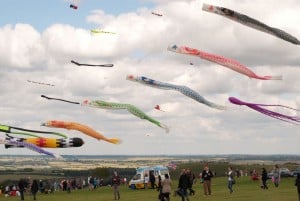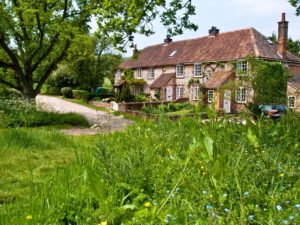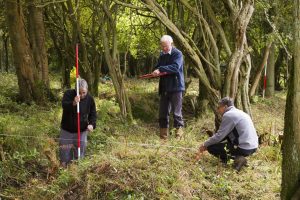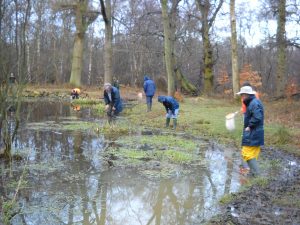Support us from £3/month
We deal with almost 1000 cases a year assisting communities, groups and individuals in protecting their local spaces and paths in all parts of England and Wales. Can you help us by joining as a member?
As the Chilterns Commons Project comes to an end, project officer Rachel Sanderson reflects on its achievements.
In the south-east of England, a large number of small commons provide important recreational facilities for people in urban and semi-urban communities. Over the last four years, the Chilterns Commons Project, run by the Chilterns Conservation Board, has been championing the 200 or so commons in the Chilterns (see map).
The Chilterns are an Area of Outstanding Natural Beauty (AONB) which stretches from the River Thames at Goring in Oxfordshire north-east to Hitchin in Hertfordshire, covering 324 square miles. As in many lowland areas, most commoners’ rights were extinguished following the 1965 Commons Registration Act and, of those which remain, only a handful are exercised.
Changing
Commons have been at the heart of our communities since mediaeval times, but twenty-first-century lifestyles often lead to changing land management or the neglect of small commons. With the cessation of grazing in the Chilterns, scrub and young woodland have developed on many commons making them less accessible and easily overlooked.
There is a rich history associated with the region’s commons, from Neolithic burial mounds to clay pits and chalk quarries used by the brick and tile-making industry to build those Midsomer Murder-type cottages.
More recent history includes WWI practice trenches and WWII camps for troops and prisoners of war. The commons are also important habitats and many of the largest are designated for their wildlife interest. Through the Chilterns Commons Project, communities have been reconnected with their local commons and more people are now aware of the treasure trove of commons in the region.
The last four years have been a whirlwind of activity. The range of work has been huge: archaeological surveys, the restoration of historic features, and practical habitat conservation such as restoring ponds and heathland, clearing scrub from chalk grassland, and protecting veteran trees, by removing the competing younger trees (‘haloing’). There has been an extensive volunteer-training programme with workshops covering topics from species identification to the running of public consultations. We have held local-history conferences and a big public event at which 1,400 people experienced life on a nineteenth-century common for a day.
We have commissioned professional surveys of ponds, geology, insects and plants which have found new and sometimes rare species. Volunteers have researched the social history of the Chiltern commons, primary-school pupils have made a film and we can celebrate a natural play-trail for children, new self-guided circular walks through commons, information boards—and much more.
Friends
More commons now have groups of friends. Existing groups have been revitalised with new (often younger) members who have been inspired to get involved. The project has supported the friends’ groups by equipping them with bowsaws, brush cutters and other tools to help them with practical work, providing specialist training such as first aid, and funding to enable them to run events from moth trapping to making witches’ brooms. The friends’ groups are holding more regular work parties and more local events for their communities, from guided walks to picnics.
We have published Our Common Heritage, six essays about the social history of Chiltern commons.
Legacy
The project’s legacy also includes some new research into best practice for managing commons and other areas of green open space that are not in agricultural production. Recreational use gives our open spaces new relevance in the twenty-first century.
The research papers, published in Local Spaces: Open Minds, contain some inspirational ideas on options for new uses of lowland commons and other green spaces. These include outdoor education for all ages, natural playgrounds and venues for a wide range of recreational activities, and important habitats for wildlife in a time of changing climate. With careful zoning, a range of activities can happen even on small lowland commons, and are not exclusive of each other.
Grant
All this has been possible because of a £400,000 grant from the Heritage Lottery Fund and contributions from the Chilterns Conservation Board, Chiltern Society and 17 other partners. Although the Chilterns Commons Project ends this summer, there is much ongoing activity to conserve and promote local commons.
The Open Spaces Society is keen that the knowledge of and enthusiasm for the Chiltern commons which the project has generated should continue to grow. We would also like to see this work replicated in other parts of the country as a fine way of celebrating and protecting our priceless commons.

The kite festival on Dunstable Downs, common land on the Chiltern escarpment in Bedfordshire. Photo: Chris Walker.



